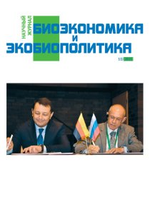Textile Reinforced Tissue-Engineered Implants
Авторы: Frese J., Moreira R., Wolf F., Mela P., Thiebes L., Kurtenbach K., Gesche V. N., Jockenhoevel S.
Рубрика: Тезисы
Опубликовано в Биоэкономика и экобиополитика №1 (1) декабрь 2015 г.
Дата публикации: 15.01.2016
Статья просмотрена: 5 раз
Библиографическое описание:
Textile Reinforced Tissue-Engineered Implants / J Frese, R Moreira, F Wolf [и др.]. — Текст : непосредственный // Биоэкономика и экобиополитика. — 2015. — № 1 (1). — URL: https://moluch.ru/th/7/archive/20/631/ (дата обращения: 19.04.2024).
Textile-based solutions are an indispensable part of our daily life and not only limited to fashion and clothing. Therefore, it is not surprising that they play a key role in the medical field of implantology. A closer look at the anatomy and biomechanics lead to the hypothesis that the human body is a textile product as biomechanical properties are mainly defined by fibre structures, like e.g. collagen bundles, elastic fibres, fibrin fibres, fibrous cartilage, and ligament etc.
Driven by the development of biocompatible materials, textile engineering applications are increasingly gaining in importance especially in the field of regenerative medicine and tissue engineering. Tissue engineering approaches are being investigated to construct living autologous implantable structures which have a post-implantation capacity for growth and remodelling. The design strategies are typically based on the seeding of a scaffold material with suitable source of living cells in an appropriate three-dimensional configuration, which is subsequently, conditioned using various external stimuli, including biochemical or mechanical factors.
Our work is focusing on the development of autologous implants, by combining textile-based scaffolds with an autologous fibrin cell carrier material. Fibrin represents an ideal scaffold to the rapid synthesis of autologous tissue-engineered constructs, as it can be isolated from a patient’s blood sample. Fibrin gel offers immediate high cell seeding efficiency, a homogenous cell distribution by gelation entrapment and has a degradation rate that can be controlled by protease inhibitors. Although it seems to be an ideal scaffold material, fibrin alone possesses inadequate mechanical properties to withstand implantation in the vascular system. Therefore, textile reinforcement is inevitable, as it allows the combination of the ideal properties of fibrin with textile structure. Textile reinforcement of cell seeded fibrin gel not only provides the needed mechanical stability, but also anisotropic behavior and the possibility of controlling the organization of the newly synthesized extracellular matrix. We could successfully demonstrate the ability of different textile technologies to create cardiovascular and respiratory prosthesis such as vascular grafts, heart valves and biological stents.







